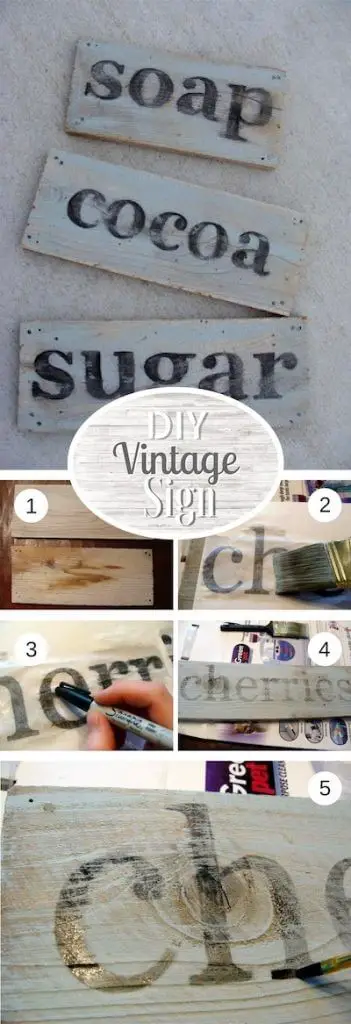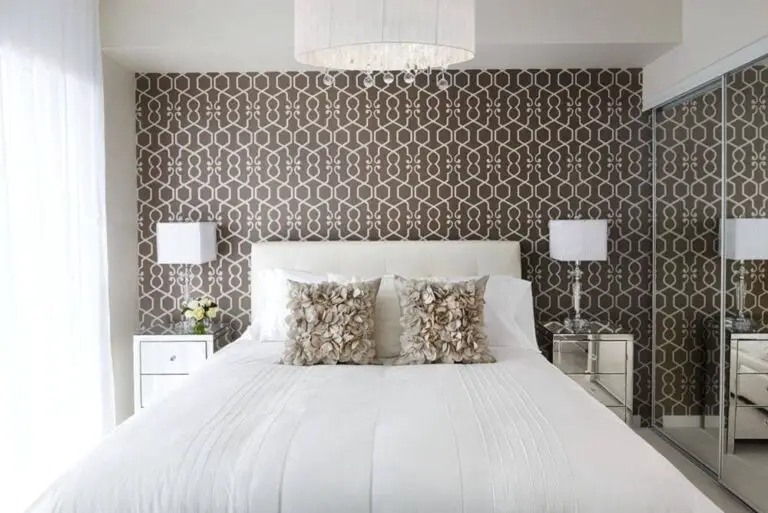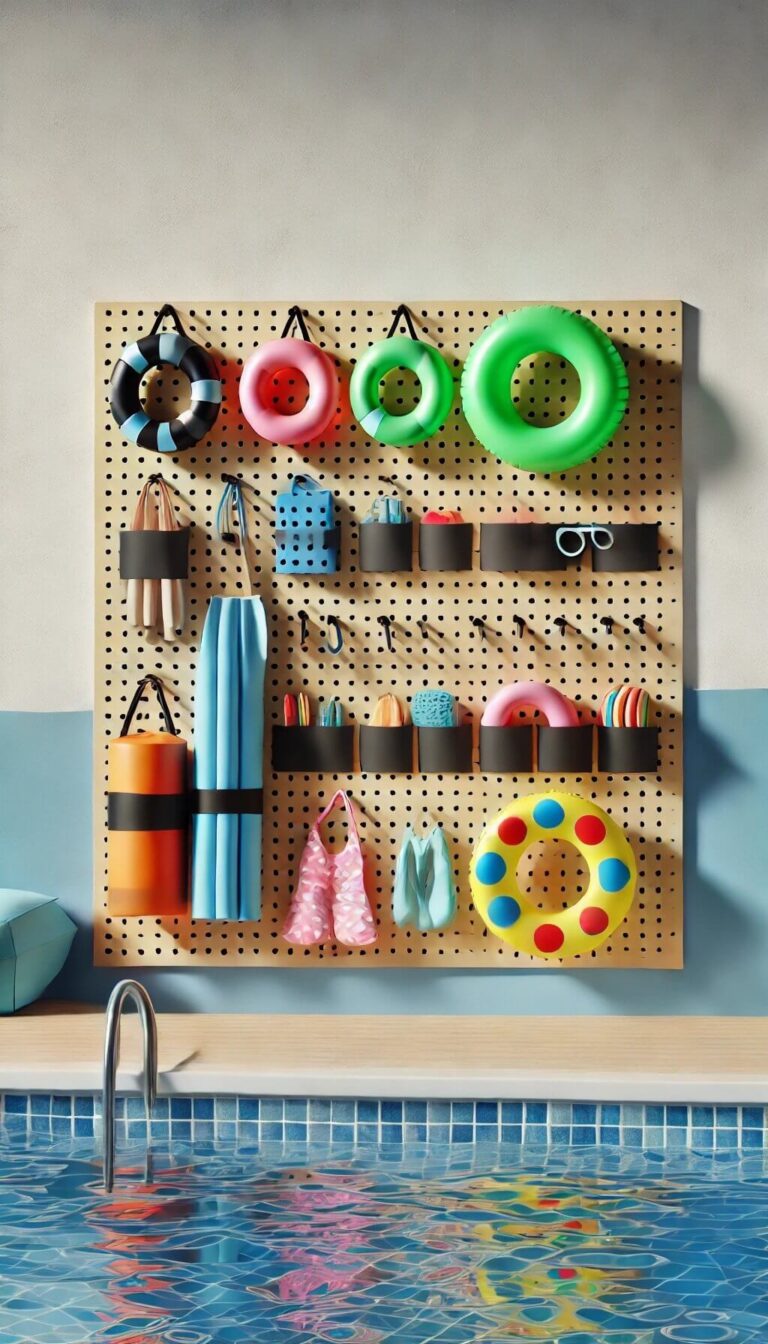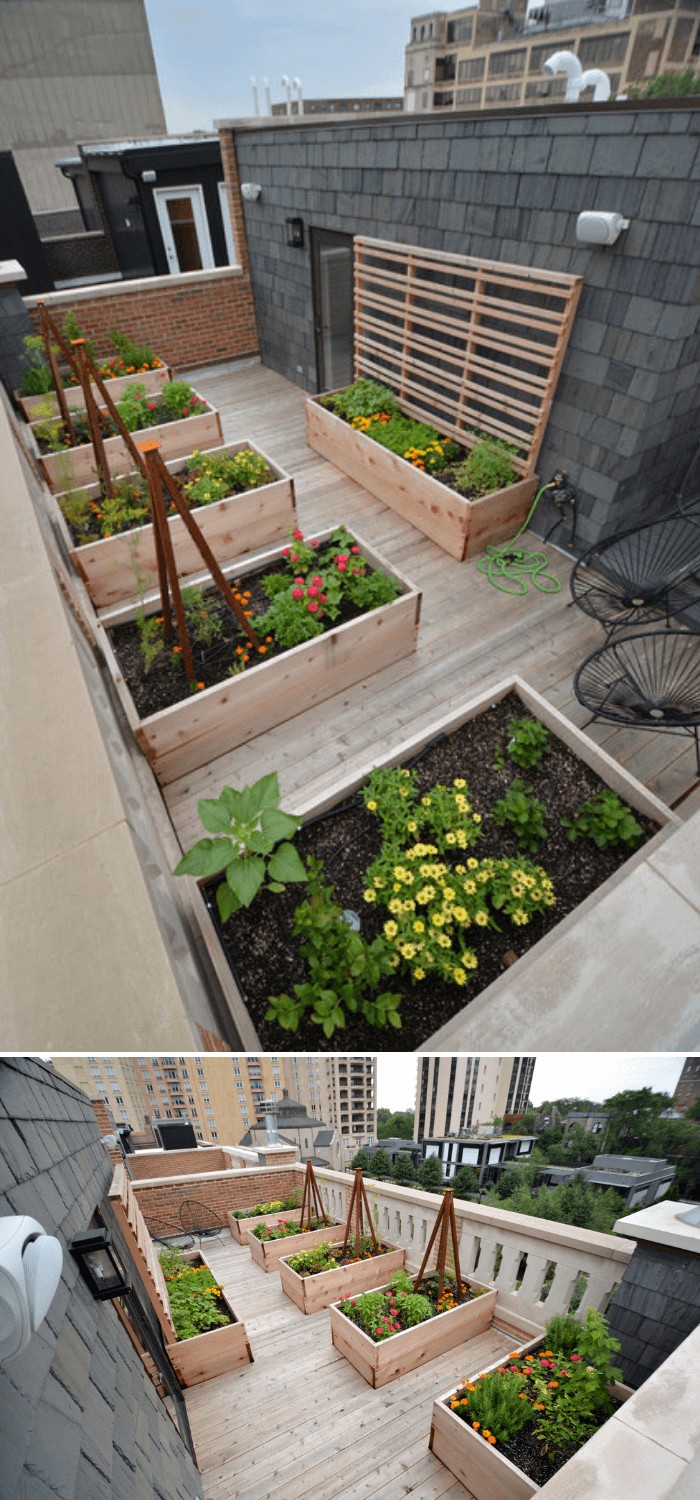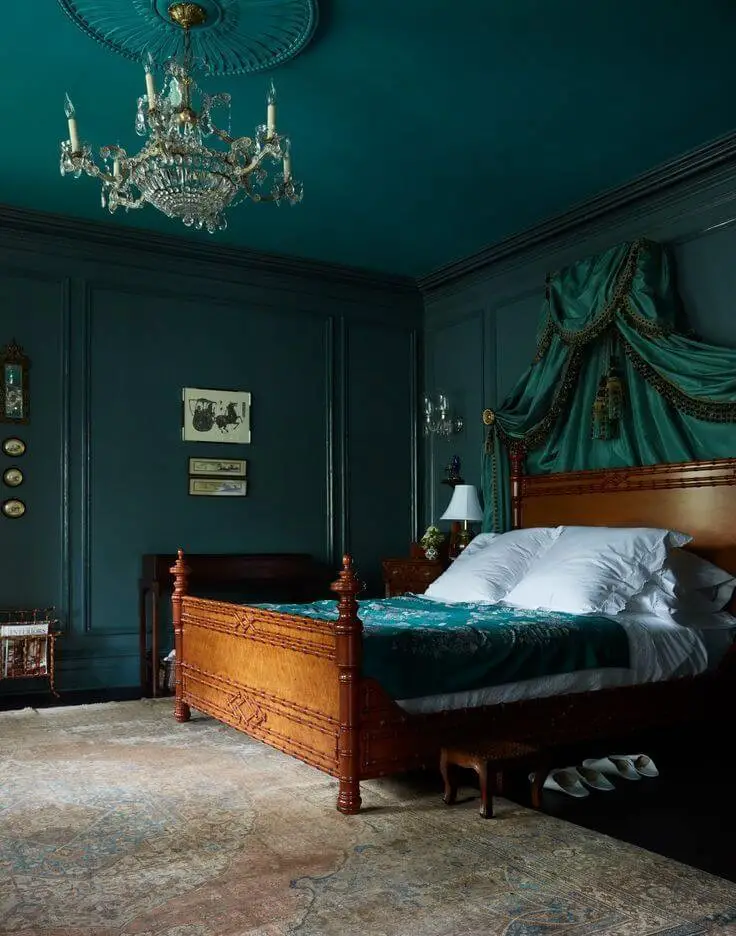20+ Transitional Bathroom Designs: Combining Traditional Bathrooms With Modern Styles
As homeowners update traditional bathrooms, they can seamlessly blend modern styles into the room, resulting in a cohesive transitional design that suits any home. This approach is particularly relevant for older homes featuring traditional bathroom styles, which are often sought after for their charm and character.
By thoughtfully combining elements of both traditional and modern designs, homeowners can create a bathroom space that harmoniously reflects their personal taste, the architecture of their home, and the unique characteristics of the room itself.
20+ Transitional Bathroom Designs
#1. Green with Envy
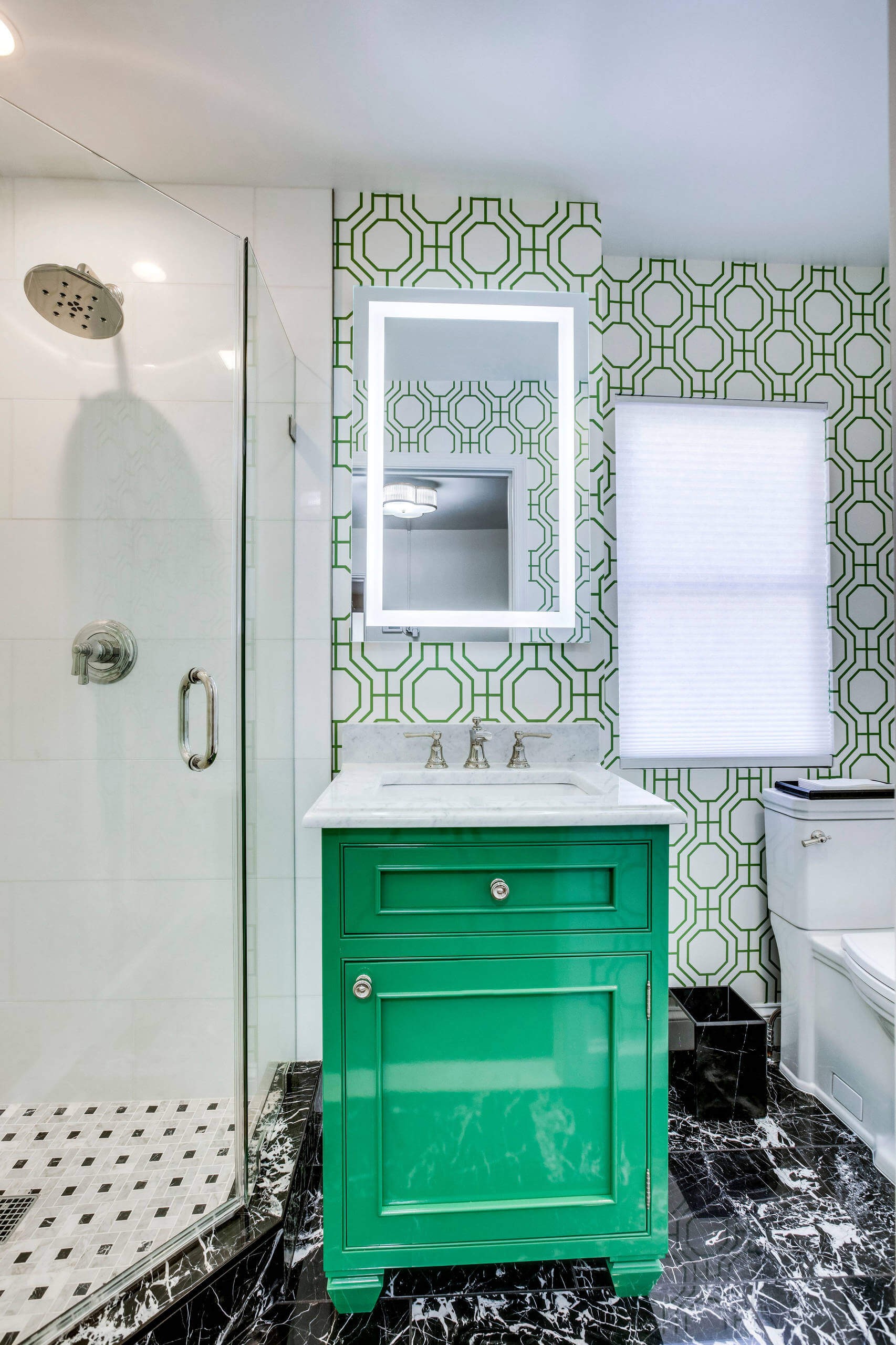
#2. Elegant El Dorado Hills Master Bathroom
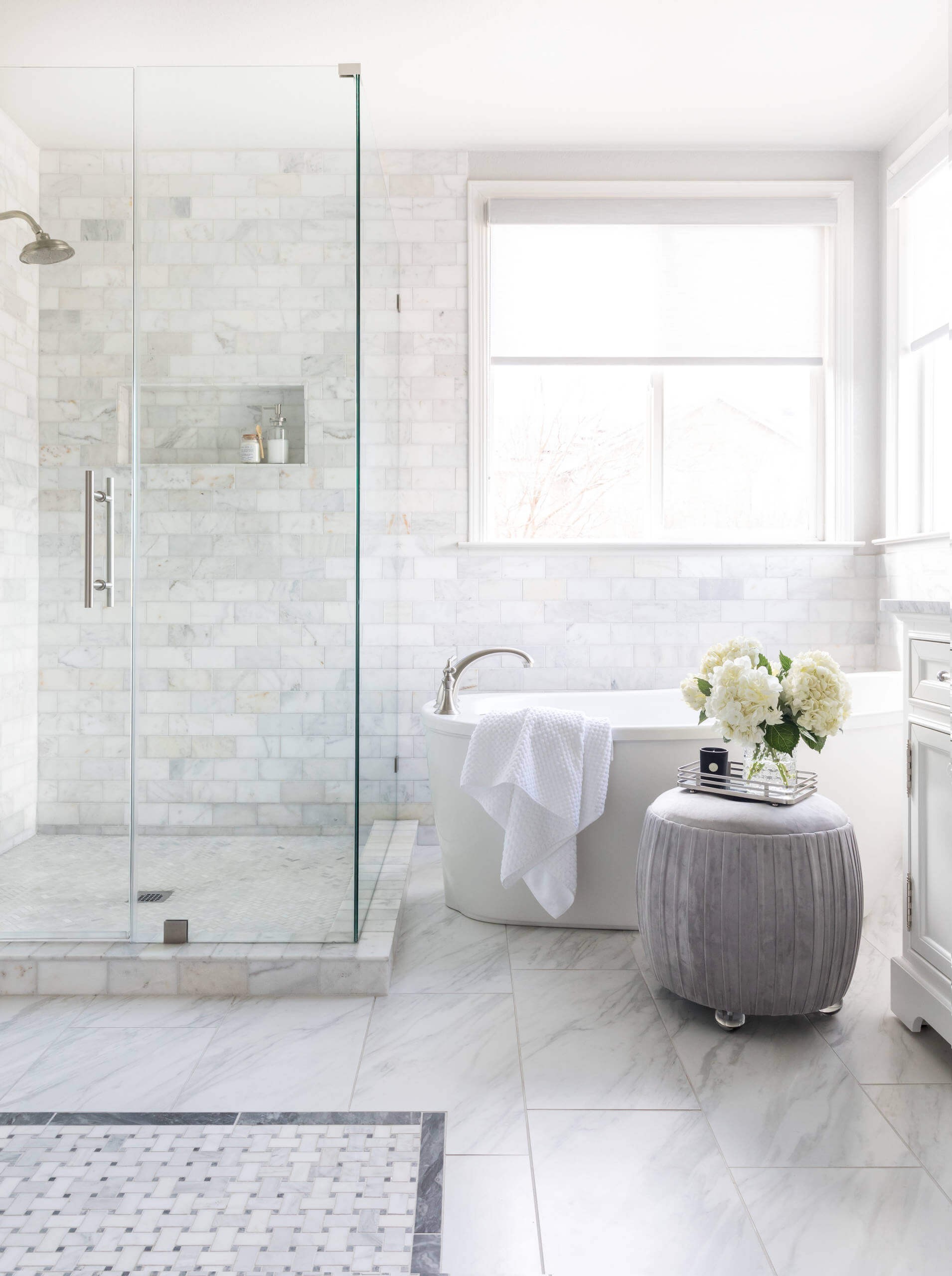
#3. Mountain Modern
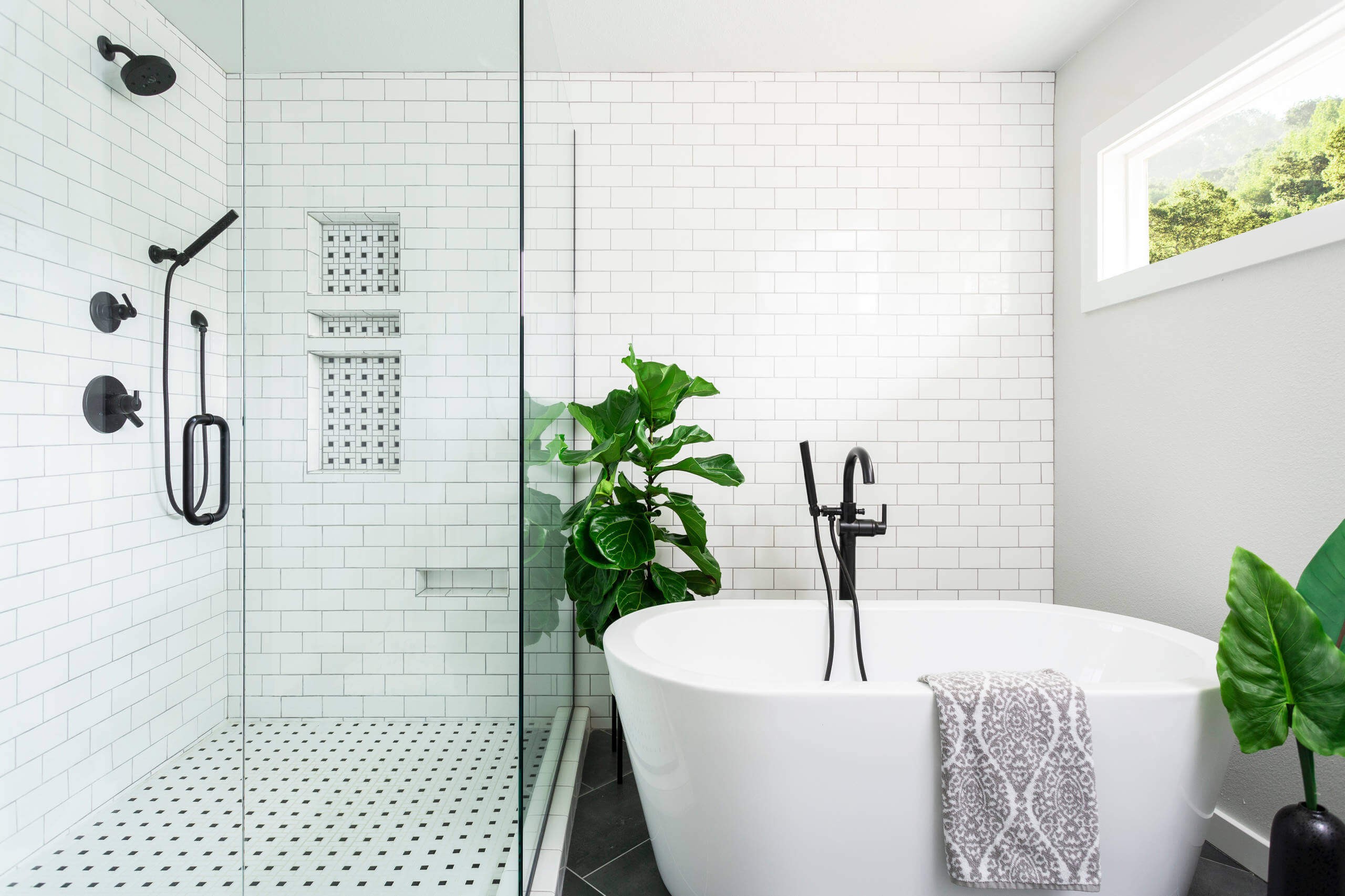
#4. Alder wood cabinet
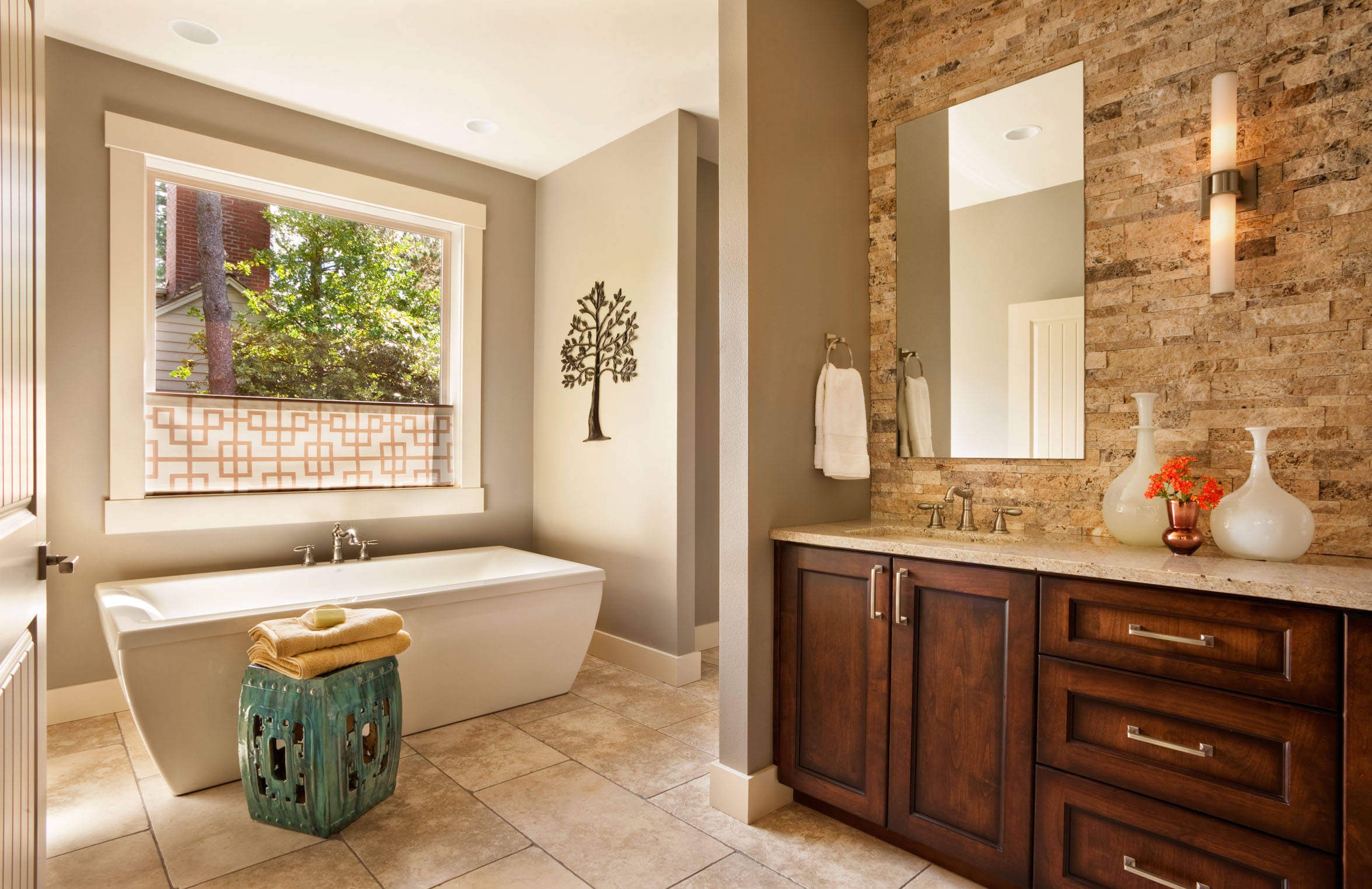
#5. Delorean grey on the floor and walls
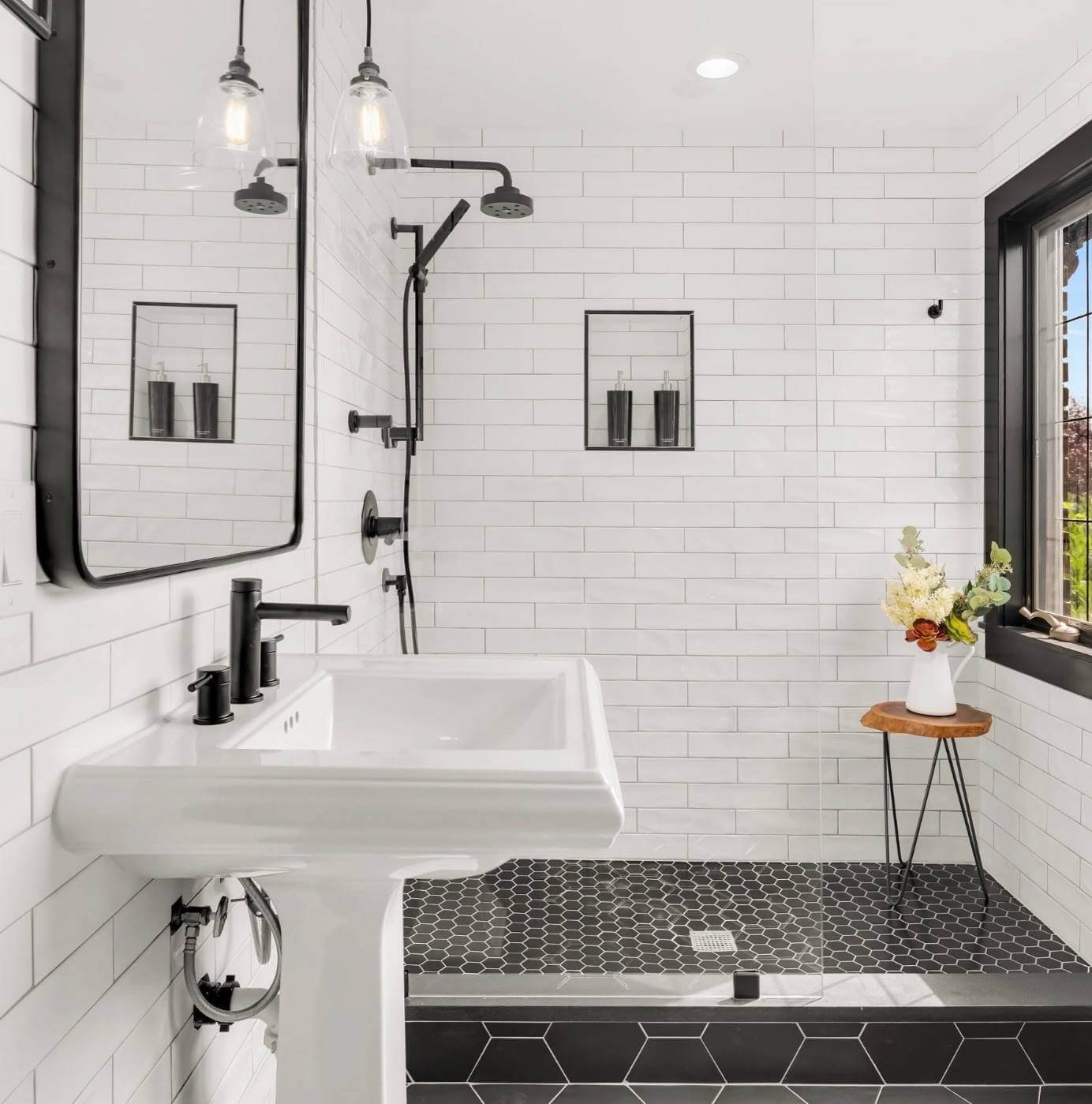
#6. Bordeaux III floor tile
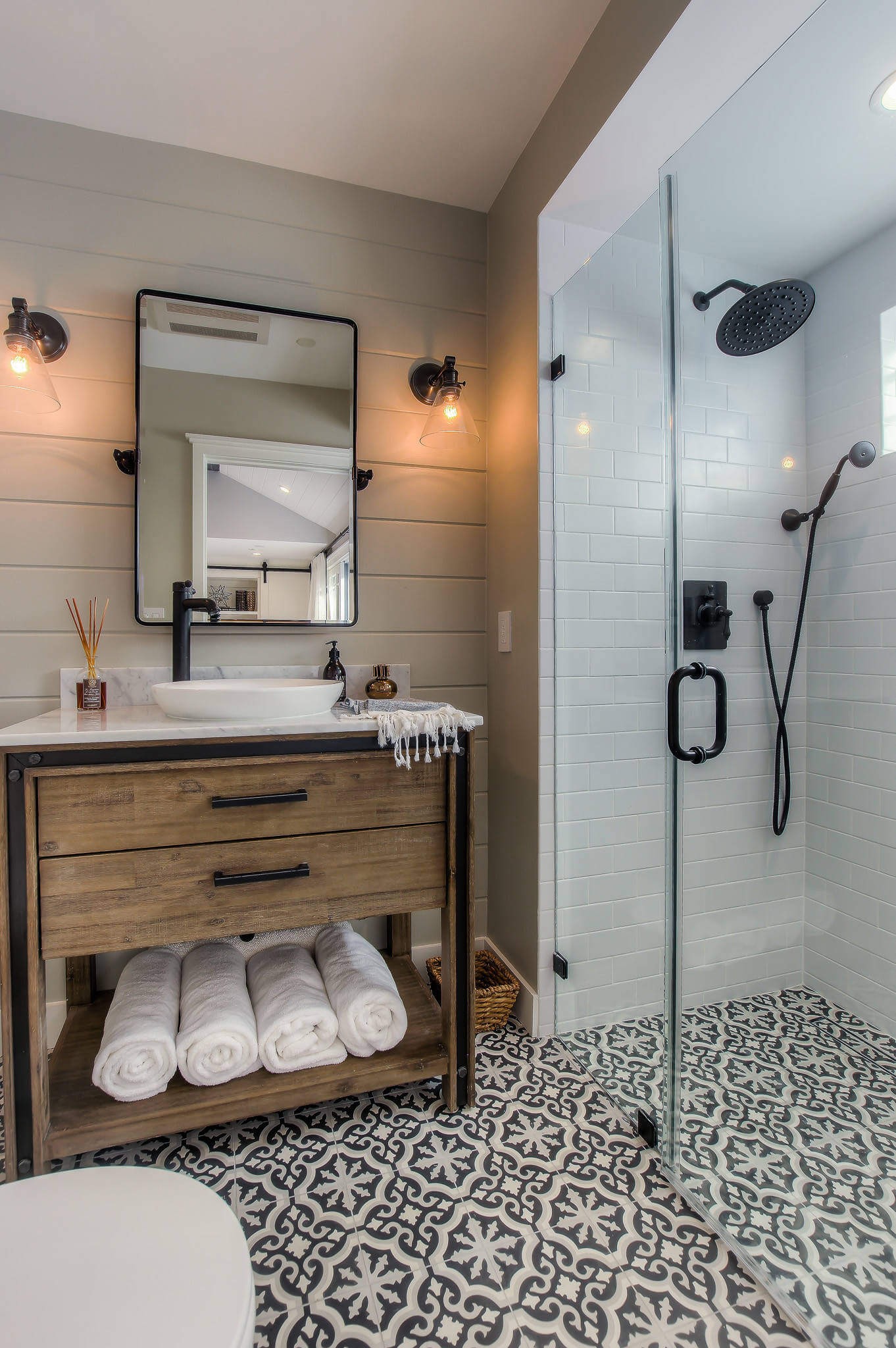
#7. Slate Tile Cabinet
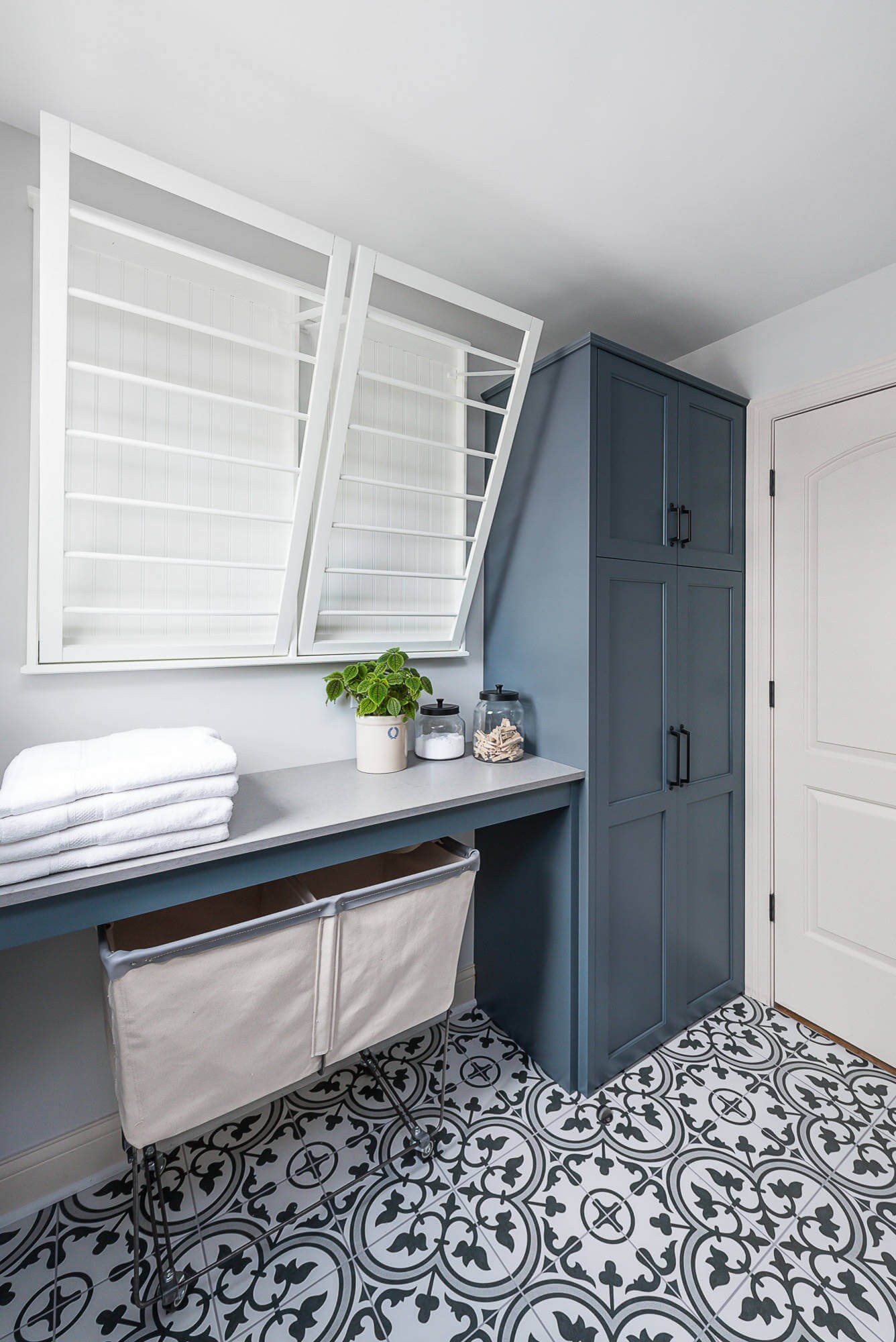
#8. A glittering chandelier
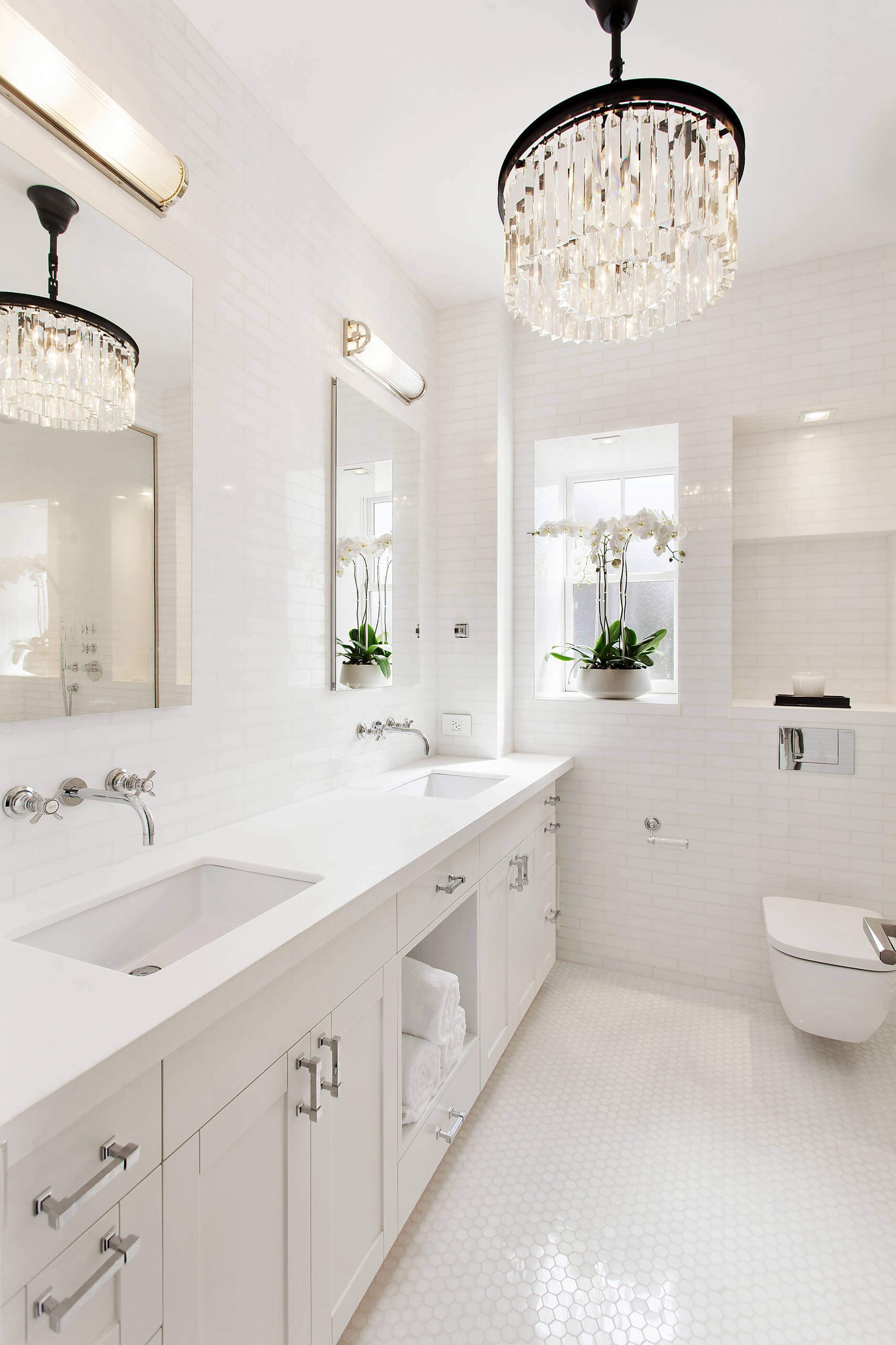
#9. Mountain Dutch
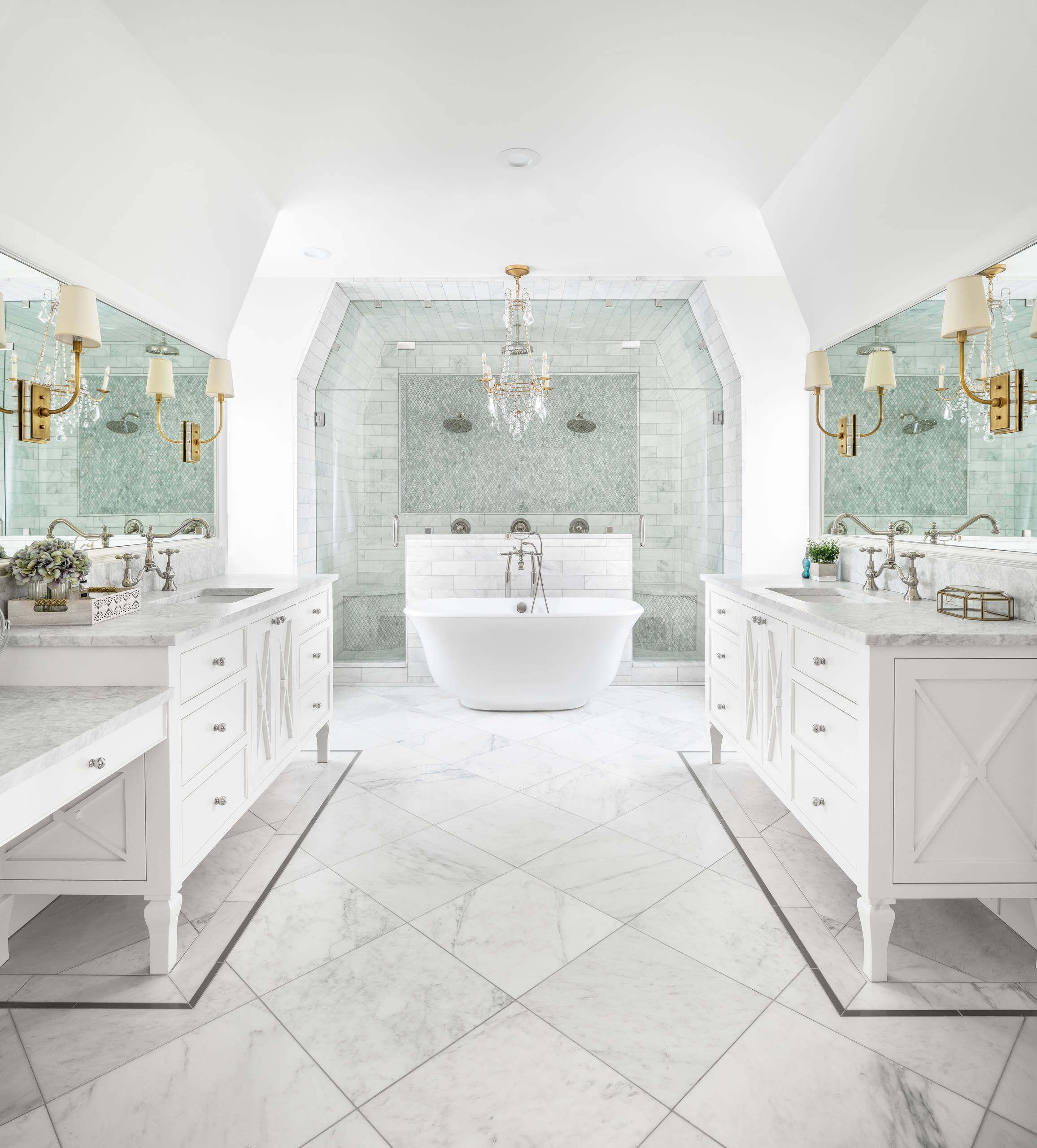
#10. Gold mirrors, gold lights
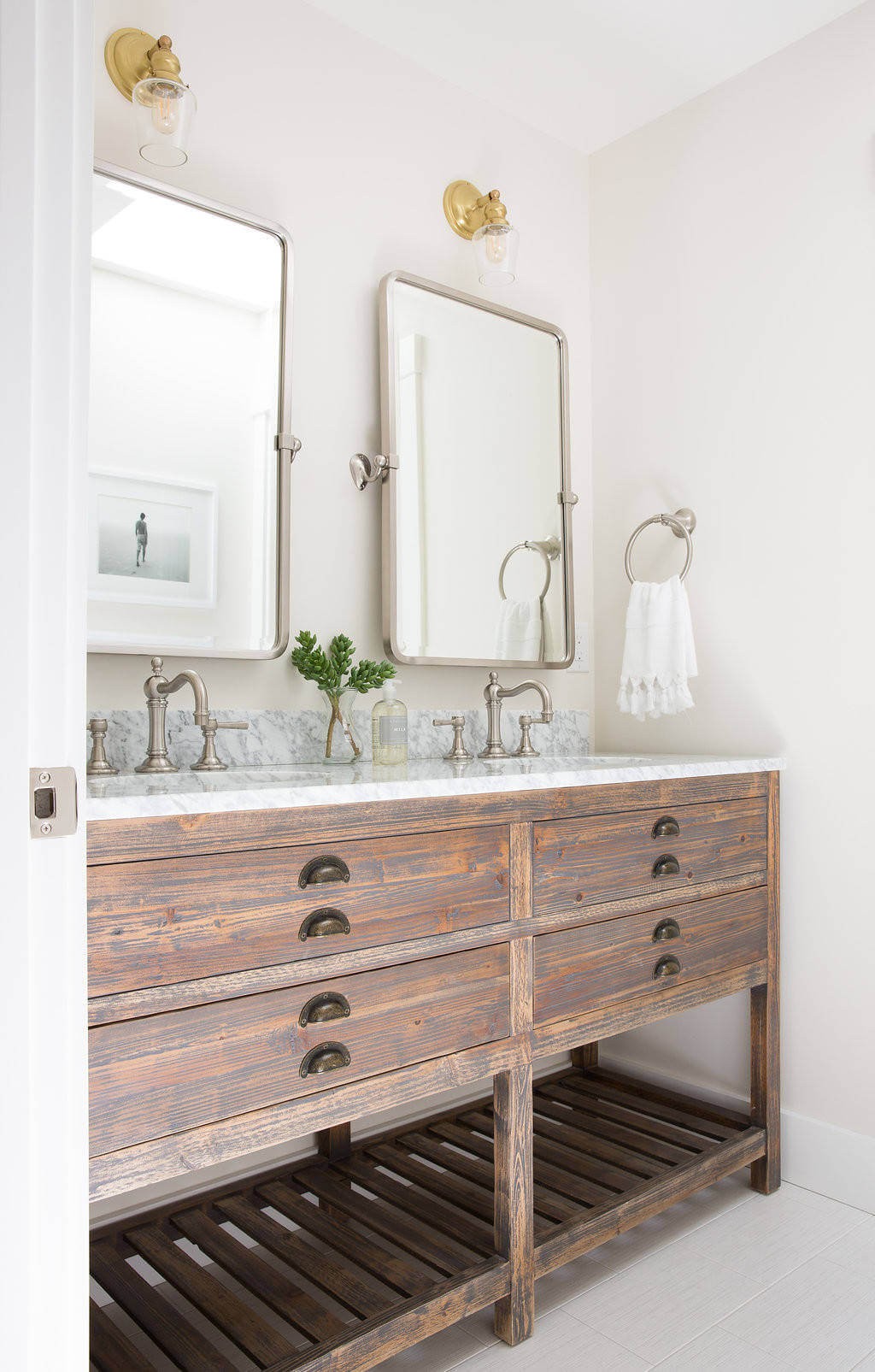
#11. Barn door
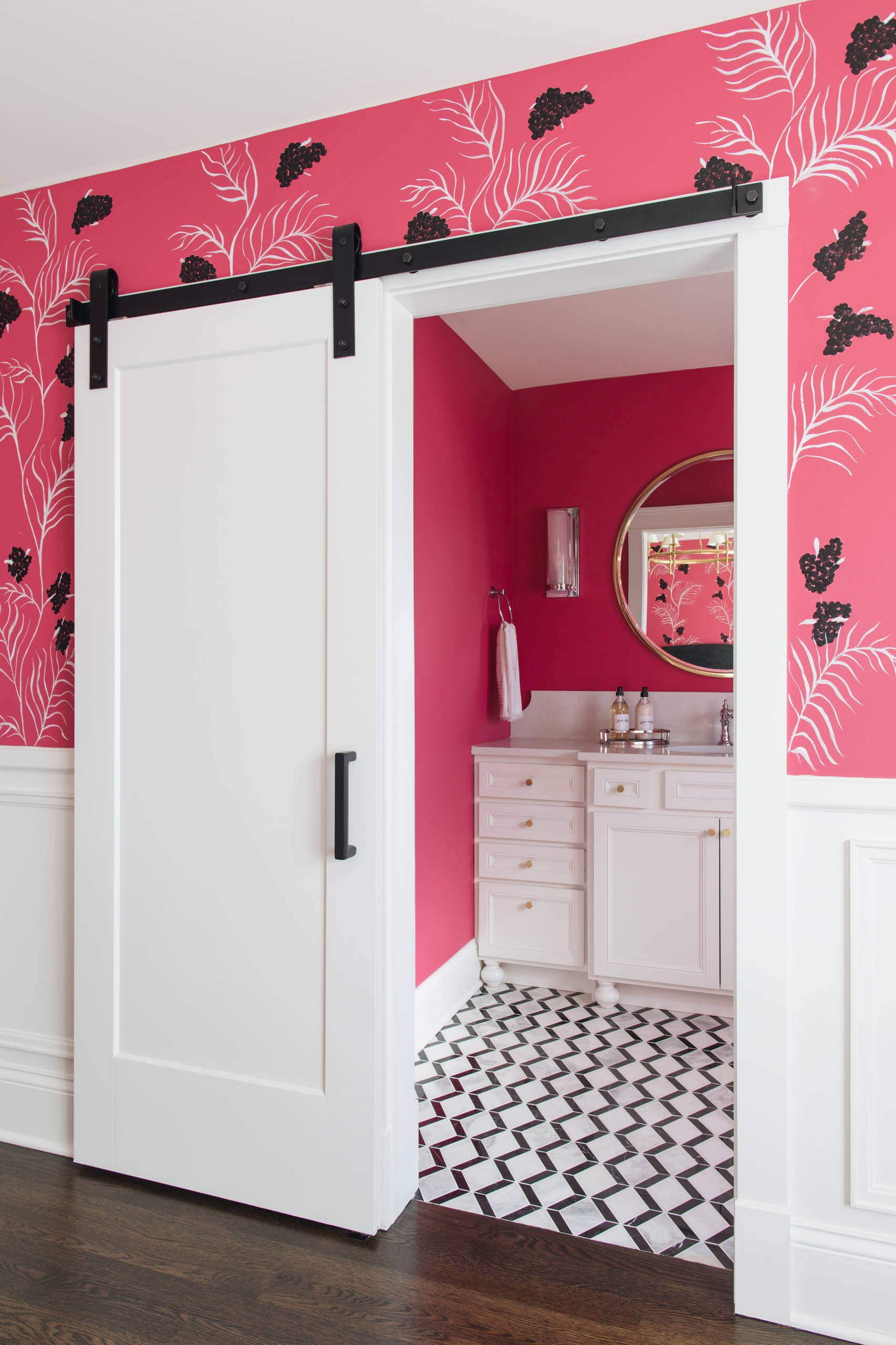
#12. Furniture repurposed as vanity
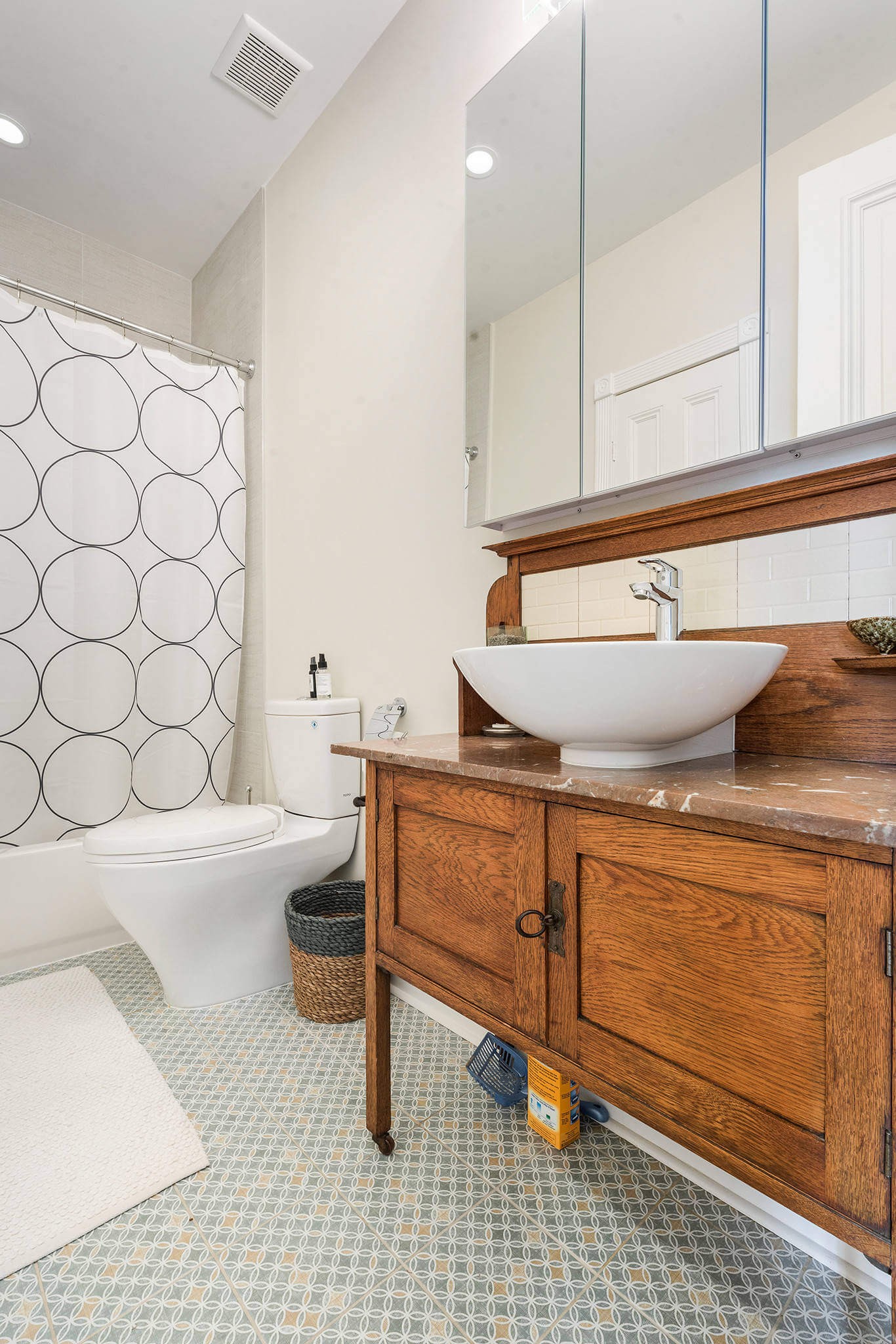
#13. Beacon Hill Duplex
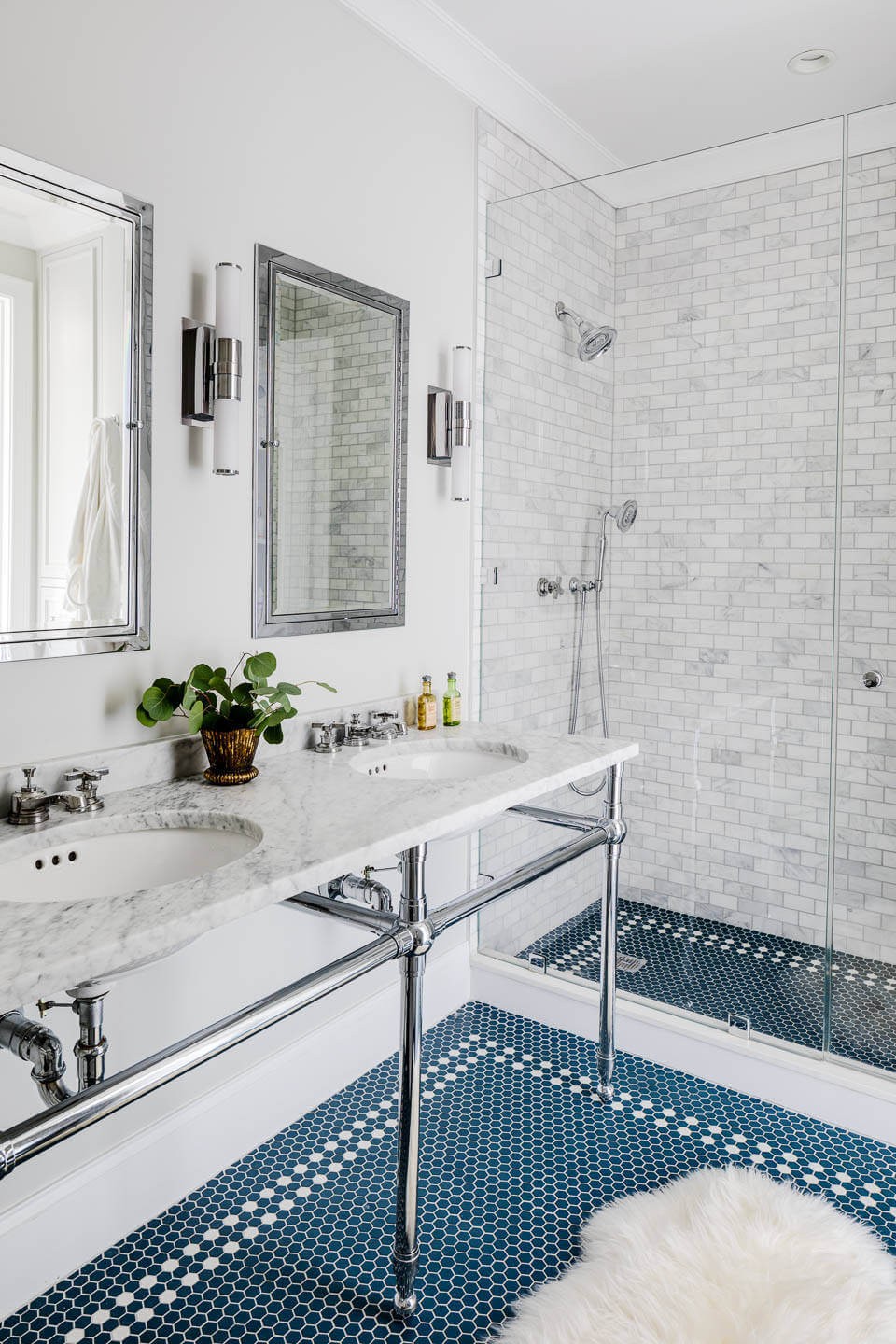
#14. Quail West – Cristale Model

#15. Italian porcelain countertop and wall and floor tile
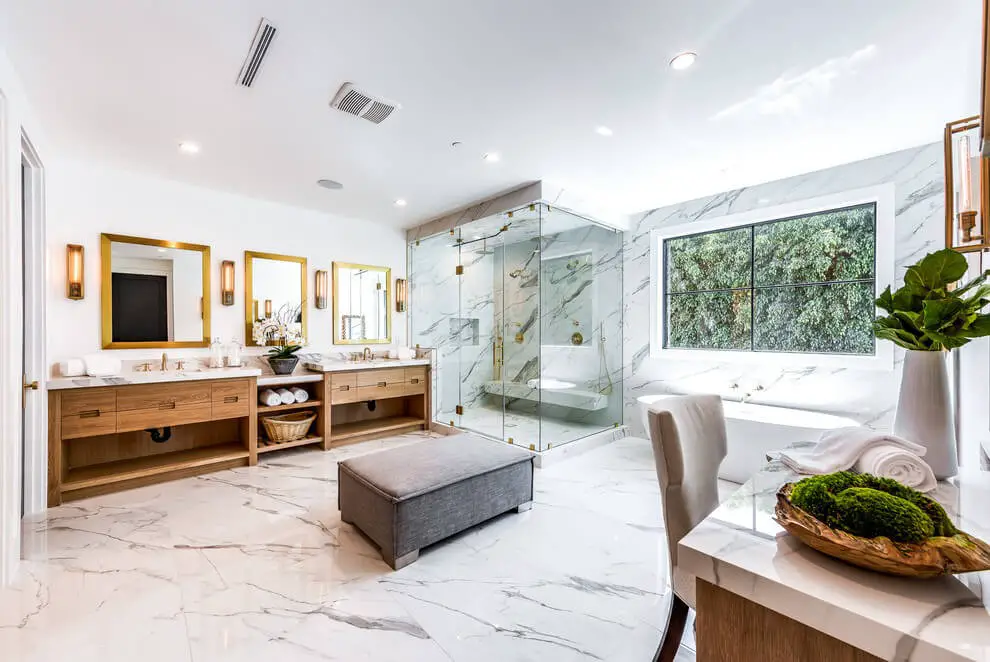
#16. Transitional Master Bath with a Hotel Flair
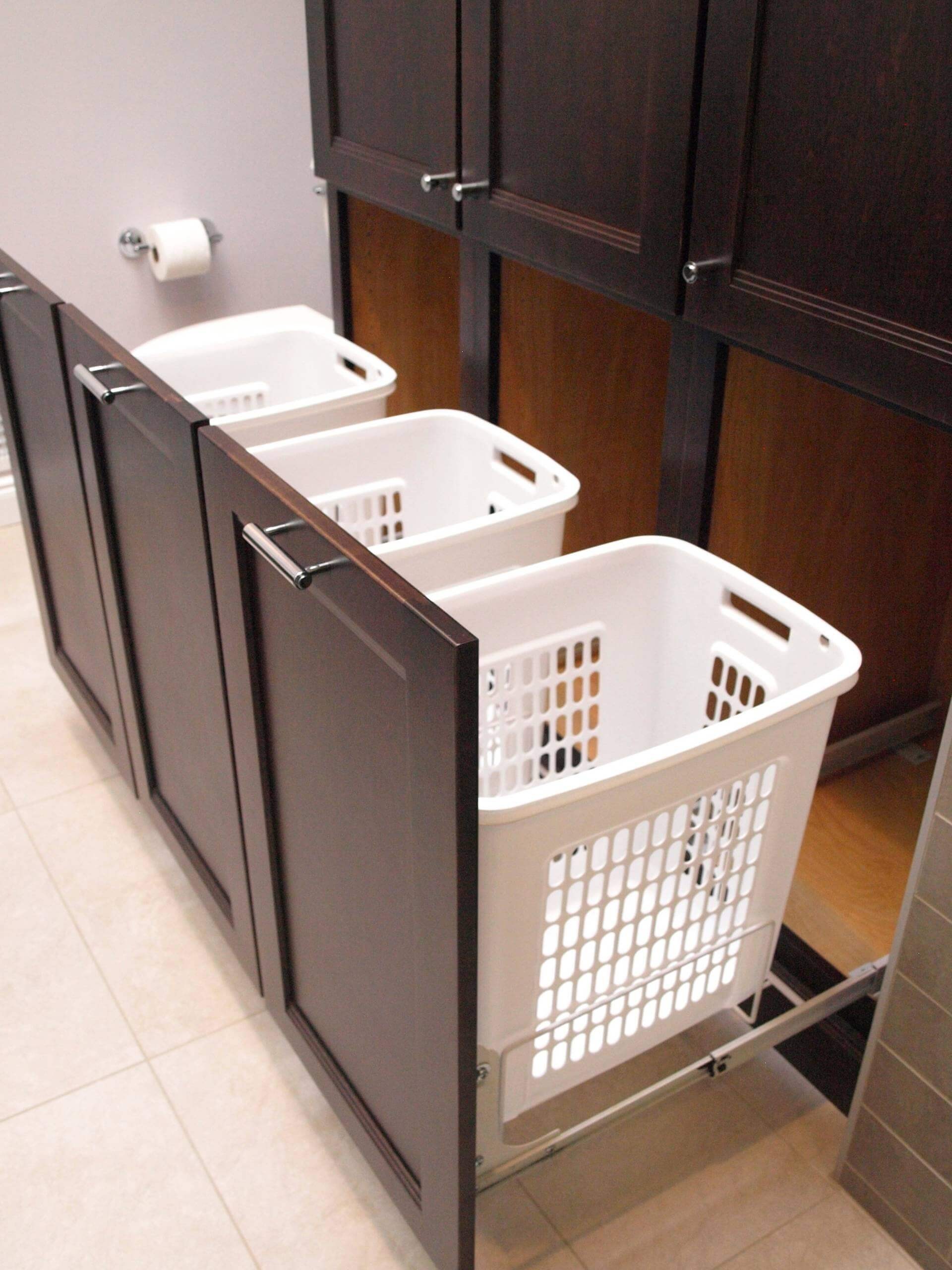
#17. Drawer pulls for towels
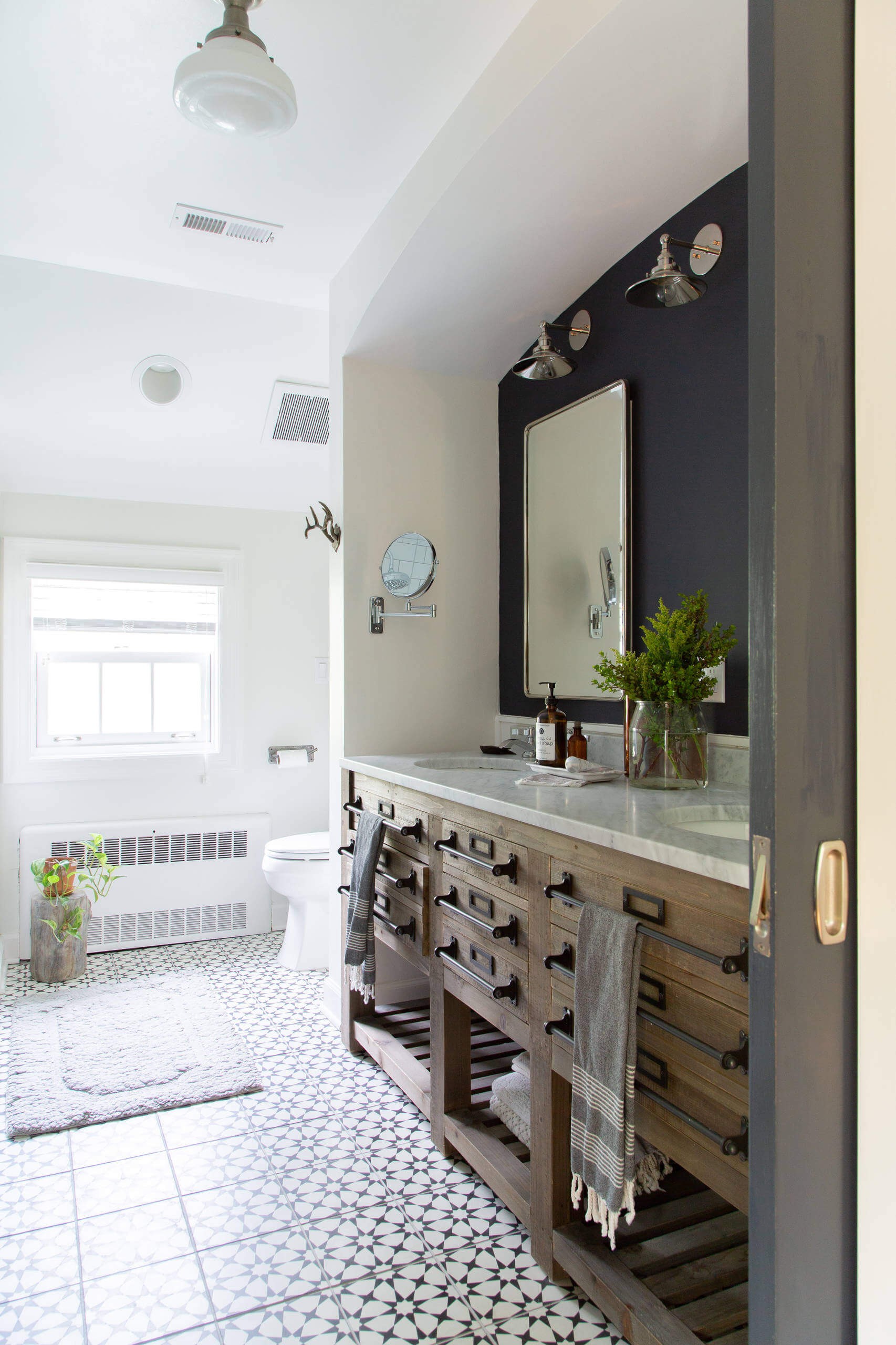
#18. Tub against shower
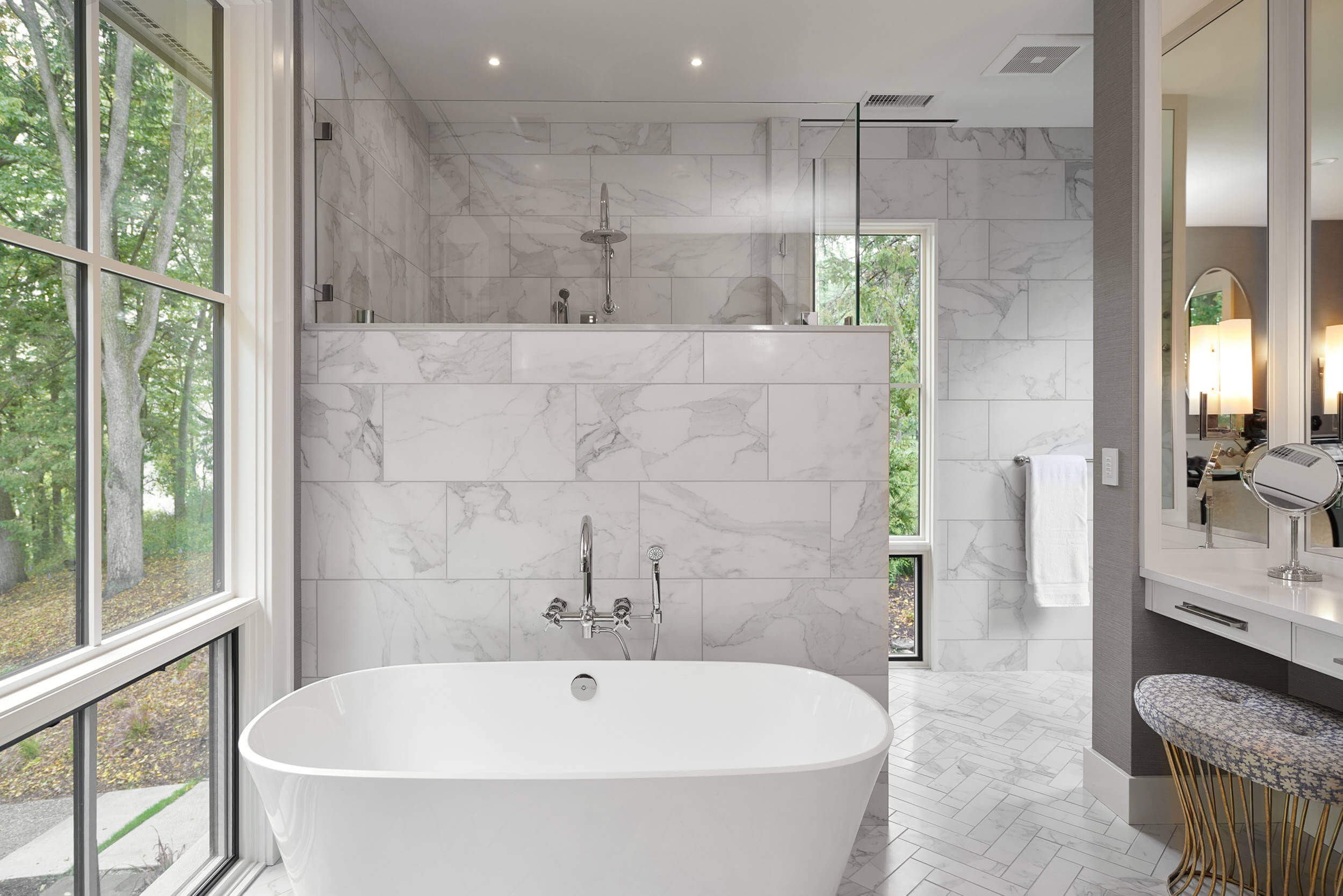
#19. Luxury bath
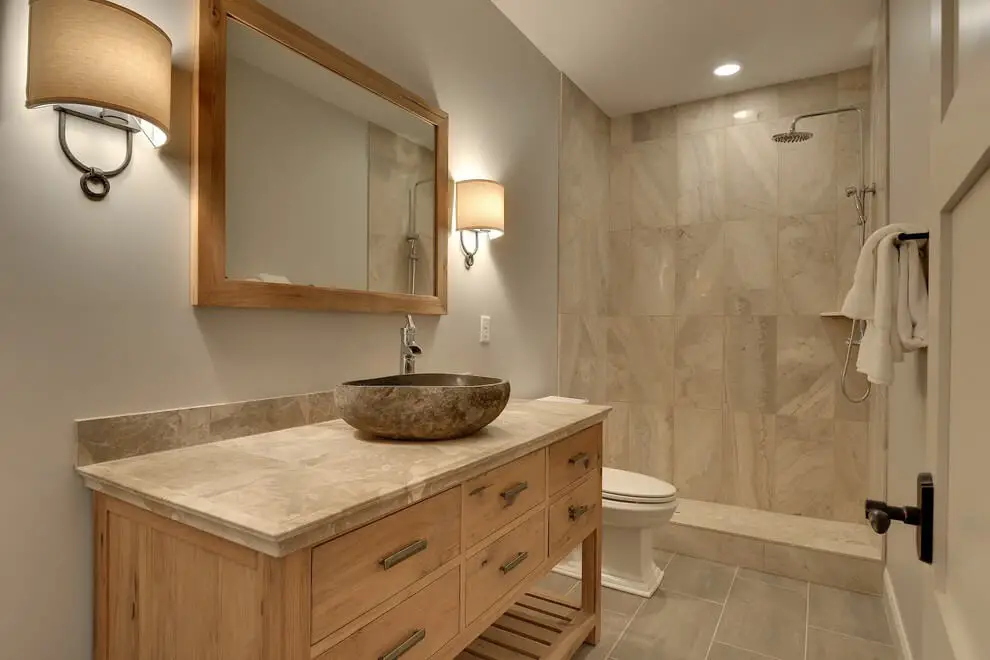
#20. Marina home
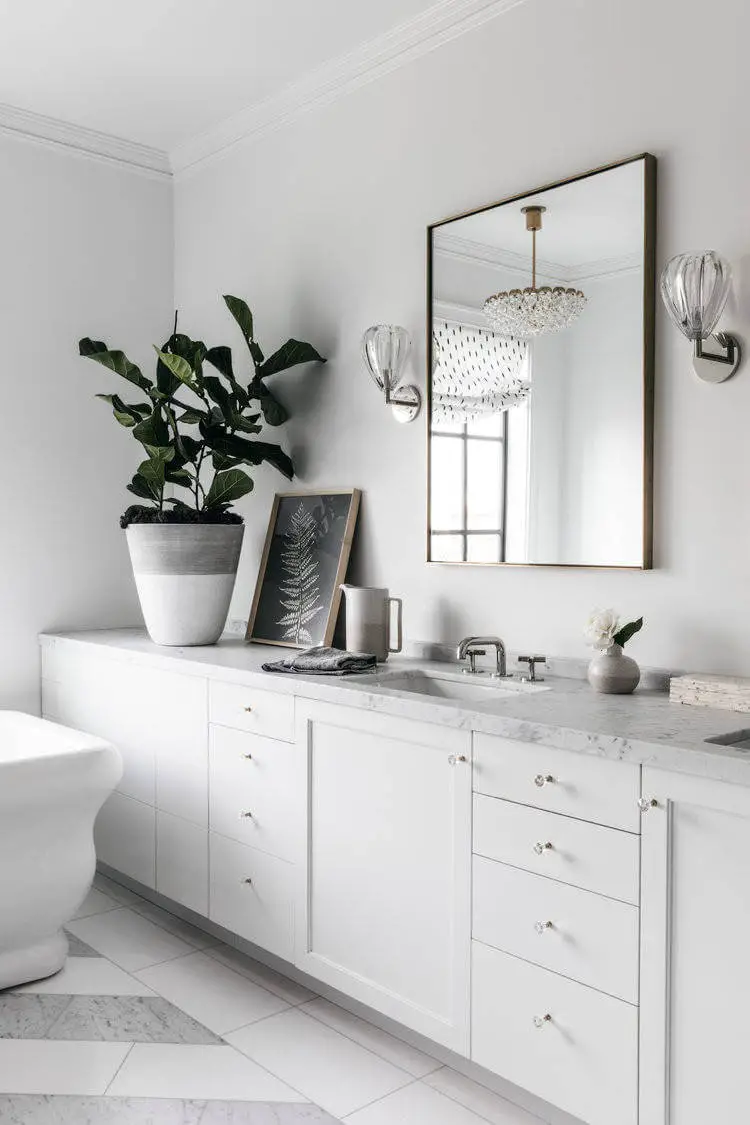
Renovating a freestanding bathtub in San Francisco’s transitional gray aesthetic requires careful consideration of each design element. In this scenario, the floor-to-ceiling gray tub takes center stage, flanked by recessed-panel cabinets that provide a sophisticated contrast to the space. The introduction of white cabinets and walls creates a harmonious balance, while an undermount sink adds a touch of modernity.
The pièce de résistance is the incorporation of gray countertops, which tie together the various design elements and bring cohesion to the overall look.
The Bathroom Fixtures
When embarking on a transitional bathroom design, it’s essential to start by considering the bathroom fixtures. Are there existing elements that can be updated, such as a vintage claw foot tub? Or does the bathroom’s size require the use of a pedestal sink? Understanding these parameters can streamline the transition from traditional to modern styles. For instance, a classic claw foot tub can be given a modern makeover with sleek faucets like Barber Wilson’s Q series.
Alternatively, a new pedestal sink can be installed in a stylish, contemporary design that incorporates both elements seamlessly. If all fixtures are being replaced, consider pairing modern designs with timeless tile patterns. For example, a small bathroom can feature a resin pedestal sink paired with large-format polished marble flooring and walls.
This approach serves two purposes: the oversized tiles create an illusion of increased space, while the traditional marble design lends an air of elegance. The modern sink brings the entire aesthetic into the present day, making the marble appear fresh rather than outdated.
Bathroom Tile Design
When designing a transitional bathroom, incorporating traditional elements in the tile design can be an effective way to create visual interest. One approach is to combine classic subway tiles on the walls with modern porcelain tiles on the floor. To add an extra layer of sophistication, consider adding glass tile borders or mosaics to complement the subway tiles.
For a slightly more modern take, you could also experiment with different sizes and shapes of subway tiles, such as 2” x 4” or 4” x 8”, which will still evoke a traditional feel while clearly signaling that the bathroom is designed for today’s tastes. If you’re looking to incorporate retro elements into your design, consider using updated color schemes on the floor in traditional patterns.
For example, you could use 2” hexagons in matte glass tile or a basketweave pattern in marble with beige and green hues to create an updated yet nostalgic look. Alternatively, you could use mosaic tiles on the floor and pair them with large format wall tiles featuring a mosaic border for a modern twist. In some cases, using traditional-sized penny tiles on the floor can also help to achieve a retro vibe.
For instance, you could install penny tiles in a blend of blues, grays, and greens to create a unique and eye-catching design. To update the space further, consider tiling the walls with 12” gray porcelain tile and adding a border of penny tiles at eye level through the shower. This combination will create a striking visual contrast that speaks to modern design while evoking the style of bathrooms from past eras.
Pull the Design Together
To achieve a harmonious look, the final design should strike a balance between modern and traditional elements. When using traditional fixtures, the tile installation should have a slightly contemporary twist. Conversely, if modern fixtures are used, the tile layout can be more traditional with an updated color palette to tie everything together. The finishing touches should include modern faucets, bathroom accessories, and mirrors that blend seamlessly into the overall design.
A transitional toilet, such as Toto’s Guinevere model, can help create a cohesive look by bridging the gap between different styles. This approach is particularly well-suited for areas where older homes are being renovated by younger homeowners, who appreciate the combination of classic charm and modern convenience. By incorporating pieces from both eras, you can craft a unique bathroom design that complements any home style or age.
Related Posts
Walk-in tubs have gained immense popularity among the elderly population due to their safety features. Some of the key attributes that make them a reliable option include non-slip surfaces, grab bars, and comfortable seating. The absence of steps or high thresholds eliminates the risk of tripping and falling, allowing seniors to independently access and exit the tub.
Moreover, the low threshold and wide entrance provide easy entry and exit points, making it easier for those with mobility issues to use the tub safely.
In a related field, kitchen and bath designers play a crucial role in creating functional and aesthetically pleasing spaces. To pursue this career pathway, one needs to have an understanding of design principles, materials, and manufacturing processes.
A degree in interior design or a related field can be beneficial, followed by gaining experience through internships and working under the guidance of experienced professionals.
When it comes to bathroom walls, there are several alternative coverings that can replace traditional tiles. For instance, glass panels, natural stone, and reclaimed wood can add a touch of elegance while also providing durability.
The key is to select a material that suits one’s personal style and functional requirements.

